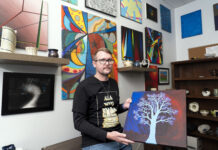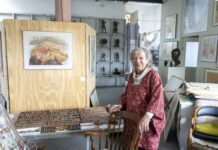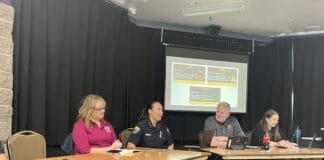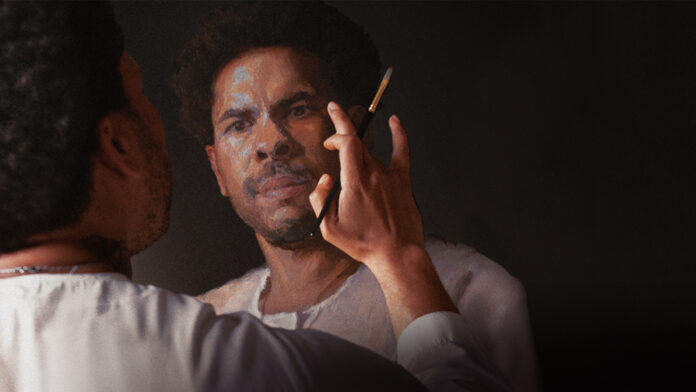
Imagine being thrown into a federal prison and emerging 10 years later as a classically trained Renaissance artist — a maestro of light and shadow comparable to Dutch painter Rembrandt van Rijn.
George Anthony Morton is just such an artist.
Clouds over Kansas City, Missouri cast the darkest shadows of Morton’s life. He was the oldest of 11 children and his mother was 15 years old when he was born.
“My first memories were being in a kitchen with my grandmother smoking dope,” Morton recalled. “I would find my grandmother’s purple Crown Royal bag with the pipe in it … [We lived] in a neighborhood drug house … so much of who I am today is because of my family and that whole experience growing up in my hometown of Kansas City.”
He described his life as a greater prison than the one he would later find himself in, “an even bigger prison of hopelessness, poverty and multi-generational neglect and failure passed on through negative programming. And it was definitely a physical prison, a prison of the mind that seemed bigger. Or made prison seem like a lesser prison, after all.”
Morton spent most of his teenage years in and out of juvenile detention. At the age of 19, he was arrested for carrying two ounces of crack cocaine, “about the equivalent of a couple of walnuts,” and was sent to federal prison for 135 months.
Morton pleaded guilty and served nine years and six months. Morton learned later from his other siblings that his mother may have played a greater role in his incarceration than he had thought at first.
“The night that I was detained, she brought the informant that ended up getting me locked up — supposedly,” he said. “That was the version of the story that I had. But my siblings and family, they’re all telling me, ‘No, she literally is the person who set you up and put you away in exchange for her own [arrest].’ Maybe she didn’t want to deal with it or face it, but she denies it to me, and I still just want to believe her.”
“Yes, often your own people are used against you,” Morton reflected. “Sometimes wittingly or unwittingly. But you love them anyway. And see beyond that, and you realize love conquers all, but beyond that, I just feel like I was blessed to be able to see beyond the veil of circumstances, and maybe see the spiritual purpose or reason for it all… what I would maybe call your purpose, or your dharma or your reason for being on the planet.”
Finding Color without Light
While in prison, Morton began reading the works of the world’s leading philosophers. He also escaped to the craft room at the prison, where he began painting, something he had done as a child to seek relief.
“There was this intense period of consumption, study, self-searching and reflection going through all of these different schools of thought — religious schools of thought,” he remembered. “Meeting all these wise people, because believe it or not, some of the most brilliant minds have been discarded by our prison system.”
Morton met Leonard Peltier in the federal penitentiary. Peltier is a Turtle Mountain Band of Chippewa activist with Lakota and Dakota ancestry, and a member of the American Indian Movement protest group. Peltier was convicted of the murders of FBI agents Ronald Arthur Williams and Jack Ross Coler, who were killed in a shootout June 26, 1975, on the Pine Ridge Indian Reservation in South Dakota.
Peltier has been in prison since 1977, although there are questions about his guilt. Peltier gave Morton his first paintbrushes.
“At the time, I was just a 19-year-old coming into the most infamous prison in the country, trying to take refuge in the hobby craft department and just paint because I knew that was my ticket,” Morton said. “They [the other prisoners] all chipped in and gave me my starter kit to paint with.”
He compared the process to “how Christ would go into the wilderness and be in solitude to receive the gospel, or how Muhammad had to go into the cave to receive divine revelation, or even the Buddha had to go into the forest.”
“I went through my own period of isolation and solitude … I tricked myself into it,” Morton said. “I tricked myself into my own healing. I would psych myself out into thinking that I was in a monastery, or this university of higher learning, when in all actuality, I was in federal prison. But again, if we’re talking about the power of the mind, heaven can become hell, hell can become heaven, and prison can become a paradise depending on how you choose to perceive these things.”
Systemic Traps
Morton said that the halfway house he was assigned to on his release from prison was in the hood, in the worst part of the city. He described this system as creating “systemic traps for people like me.”
“Instead of it creating bitterness, it created this drive for redemption,” Morton said. “I would just go to sleep and wake up every day with the question on my mind: What is my purpose? What is my reason for being? … I just operated off of pure faith.”
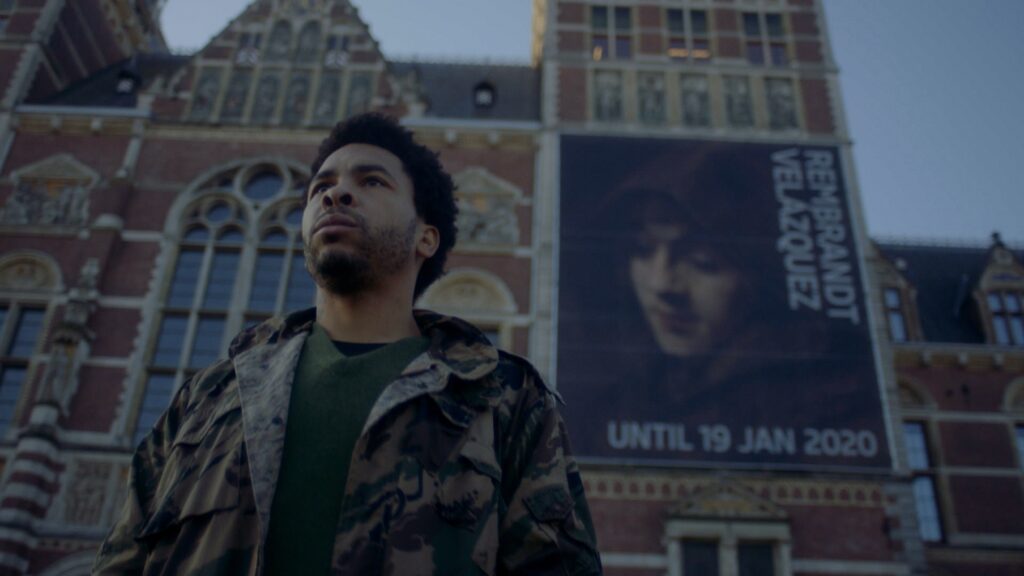
Photo courtesy of HBO
Morton went on to study under some of America’s leading artists and instructors before traveling to Europe to study and deconstruct the works of the Renaissance masters. He became the first African-American to graduate from any campus of the Florence Academy of Art, where he won the competitive awards for Best Figure Drawing and Best Portrait Drawing in 2015 and 2016, respectively.
Morton’s life later became the subject of a documentary, “Master of Light,” which won the Documentary Feature Grand Jury Award at SXSW 2022 and recently aired on HBO and in Sedona.
In conjunction with the film’s nationwide release, Morton has been working with Represent Justice, an organization that is attempting to engage audiences in reimagining the justice system and creating a real demand for change.
Coming to Sedona
On Dec. 2, “Master of Light” was shown at the Mary D. Fisher Theatre as a collaboration between the Sedona International Film Festival, Northern Arizona Restorative Justice and the Sedona Arts Center. Morton called viewing the film a healing experience, not just for himself, but for the other people in it.
“I chose to dignify everyone’s role in the film and presence in the film, and it’s not that many characters,” Morton stated. “I will be able to look in the mirror and feel good about this love letter to future generations — to my 8- year-old daughter and to my 15-year-old nephew — without compromise. And so, before I ever got my first award, I had already won, in that sense, because I was able to do that.”
“I think his struggle … was one of the elements of the film that I thought should be emphasized. That there are generations upon generations of dysfunction is the challenge to work through,” said Jeremy J. Hawkes, executive director of the Northern Arizona Restorative Justice Program.
“To see George, have a message like this, and model it for people in the world is very important.”
“I’m just a regular guy who didn’t fall from out of heaven,” Morton told several juveniles who are part of the Journey Program, as well as others from the Juvenile Detention Center.
“I came out of the same hell that some of you are in and I’m still trying to transcend [it] to this day. And it’s an ongoing thing that you wake up and make the choice to do every day. So, when you see me … I just want you to know that. I just feel like just yesterday I was the juvenile in the Just Say No program or the Scared Straight program and someone was trying to give me the Scared Straight lecture. You have options, and you can make better choices.”
From Student to Teacher
At 39 years of age, Morton feels that he has learned life’s greatest lessons and is now able to teach those who need it most.
“I believe that when one person teaches, two people learn, so yeah, who’s really teaching who?” Morton asked. “I’m here as a student to learn as well. And if I can share something that might inspire someone or give them a perspective, they didn’t have — wonderful, you know? I just don’t necessarily get in the mindset of being the master teacher in that sense, I just share my story … [and] what a privilege it is to have people want to hear what you may have to say.”
Morton has emerged with some critics calling him one of the master painters of the modern-day Renaissance, even while continuing his healing journey, mending his relationship with his mother, spending time with his daughter and painting in his studio in Atlanta.
“I am not what has happened to me. I am what I choose to become. Your mind is a garden of fertile soil, and you can plant any seeds you want in there,” he said.
















